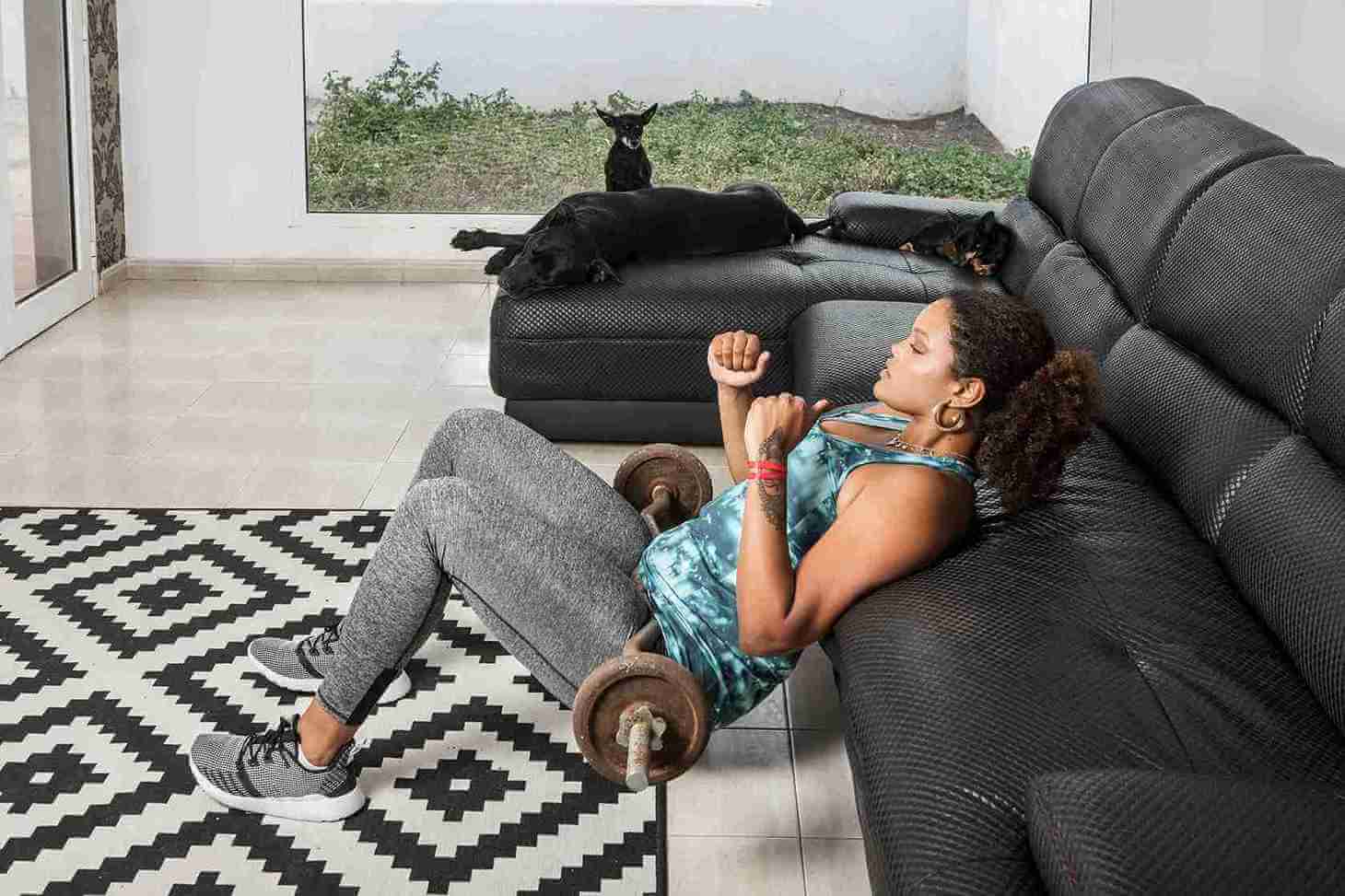Top 5 Glute Exercises for Women at Home
Why Glute Exercises Are Essential During Menopause
Glute exercises are not just about aesthetics—they are crucial for strength, mobility, and joint health, especially during menopause. As the body undergoes hormonal changes, muscle loss (sarcopenia), joint stiffness, and a slower metabolism can make daily activities more challenging. Weak glutes contribute to poor posture, lower back pain, and reduced mobility, increasing the risk of falls and injuries.
By incorporating targeted glute exercises, you can build strength, improve balance, and support overall movement. These exercises help stabilize the hips and pelvis, ease joint pain, and maintain muscle mass, making them an essential part of a menopause-friendly workout routine.
Top 5 Glute Exercises for Women at Home
You don’t need a gym to strengthen your glutes! These five simple yet effective exercises can be done at home with minimal equipment while being easy on the joints.
- Chair-Assisted Squats – Strengthening Without Knee Strain
Squats are among the best exercises for glute strength, but they can sometimes put pressure on the knees. Chair-assisted squats provide support while ensuring proper form. Stand in front of a chair, lower yourself as if sitting, and push back up. This movement strengthens the glutes, thighs, and core while improving lower-body endurance. - Glute Bridges – Improving Core Stability and Lower Body Strength
One of the most effective exercises, glute bridges target the lower back, glutes, and core. Lie on your back with knees bent, lift your hips while squeezing your glutes, then slowly lower. This move enhances spinal stability and strengthens the pelvic muscles, which is particularly beneficial during menopause. - Standing Kickbacks – Gentle Yet Effective for Toning
This exercise isolates and activates the glutes without putting strain on the knees. Hold onto a chair or wall for support, extend one leg straight back, and squeeze your glutes. Standing kickbacks help tone and strengthen the lower body while improving balance and coordination. - Side-Lying Leg Lifts – Engaging Outer Glutes and Improving Hip Stability
Targeting the gluteus medius, this exercise improves hip stability and outer thigh strength. Lie on your side, lift your top leg upward, then lower it back down in a controlled motion. Side-lying leg lifts help prevent hip pain, enhance mobility, and maintain proper posture. - Step-Ups (Using a Low Step) – Enhancing Balance and Lower-Body Endurance
Step-ups mimic real-life movements like climbing stairs, making them functional and effective. Use a low step or sturdy surface, step up with one foot, bring the other foot up, then step down. This move strengthens the glutes, thighs, and calves while improving balance and cardiovascular endurance.
Understanding the Impact of Menopause on Muscle and Joint Health
Hormonal changes during menopause, particularly a drop in estrogen, accelerate muscle loss and joint stiffness. Lower estrogen levels also affect collagen production, leading to weaker joints, reduced flexibility, and an increased risk of osteoporosis. As muscle mass declines, everyday movements like walking, climbing stairs, or bending down can become more challenging, increasing the likelihood of falls and injuries.
This is why glute exercises for women are essential—not only do they build muscle, but they also support joint health by reducing strain on the hips, knees, and lower back. Strengthening the glutes helps maintain pelvic stability, supports spinal alignment, and enhances overall lower-body function. Stronger muscles also help absorb impact more effectively, reducing stress on vulnerable joints.
Regularly practicing these exercises improves stability, posture, and overall movement, making daily tasks easier and more comfortable. By incorporating glute-focused strength training into a fitness routine, women can stay active, independent, and pain-free well into their later years, ensuring long-term mobility and confidence.
The Role of Glute Training in Bone and Joint Health
Strong glutes provide essential support to the lower body, helping to stabilize the pelvis and reduce stress on weight-bearing joints like the knees and spine. When these muscles are weak, the body compensates by placing extra strain on the joints, which can lead to discomfort, stiffness, and an increased risk of injury. Glute exercises for women play a crucial role in strengthening these muscles, improving overall movement efficiency, and reducing joint pain.
Weight-bearing exercises, such as squats, step-ups, and glute bridges, are particularly beneficial as they not only build muscle but also help maintain bone density. Engaging in regular strength training stimulates bone remodeling, reducing the risk of osteoporosis and fractures—both of which become more prevalent during menopause. Additionally, glute training enhances balance and coordination, minimizing the likelihood of falls and improving overall mobility.
By incorporating these exercises into a well-rounded fitness routine, women can protect their bone and joint health, enhance flexibility, and sustain an active lifestyle well into their later years.
Creating a Sustainable Workout Routine for Long-Term Benefits
To maximize the benefits of glute training, aim to practice these exercises at least 3 to 4 times a week. Since menopause-related changes can slow muscle recovery and increase stiffness, combining strength training with flexibility and low-impact cardio ensures a well-rounded fitness routine.
- Pair glute training with walking to maintain bone density and cardiovascular health.
- Incorporate yoga or Pilates to enhance core strength, flexibility, and posture.
- Prioritize consistency by scheduling workouts and allowing rest days to prevent overstraining.
The key to long-term success is steady, sustainable movement that supports your body’s changing needs.
Conclusion: Prioritizing Strength, Stability, and Confidence
Glute training is more than just a fitness trend—it is a necessity for maintaining strength, mobility, and independence during menopause. By incorporating glute exercises for women, you can improve posture, reduce joint pain, and support bone health while enhancing overall confidence.
A well-functioning lower body not only makes daily movement easier but also promotes better spinal alignment, improved core stability, and a reduced risk of injuries. Prioritizing these exercises will help you stay strong, active, and vibrant for years to come!
FAQs
To build glutes quickly at home, women should focus on progressive overload—increasing reps, adding resistance bands or weights, and ensuring proper glute activation. Some of the best home-friendly exercises include squats, donkey kicks, lunges, and glute bridges, which target all areas of the glutes for strength and shape.
Both exercises target the glutes, but they differ in intensity. Glute bridges are beginner-friendly and performed on the floor, engaging the core and hamstrings. Hip thrusts, done with a bench, offer a greater range of motion and stronger muscle activation, making them ideal for advanced glute strengthening
Walking—especially on an incline—engages the glutes, but it’s not enough for significant muscle growth. For real strength and shape, targeted exercises like squats, step-ups, and hip thrusts are far more effective
Yes! Strong glutes support the pelvis and hips, which play a major role in balance. Exercises like step-ups and side-lying leg lifts enhance stability, reducing the risk of falls—an important factor as bone density decreases with menopause.
Yes! Many glute exercises, like bridges and squats, engage the pelvic floor muscles. Strengthening both the glutes and pelvic floor can improve bladder control and core stability.

Sonakshi Kandhari





